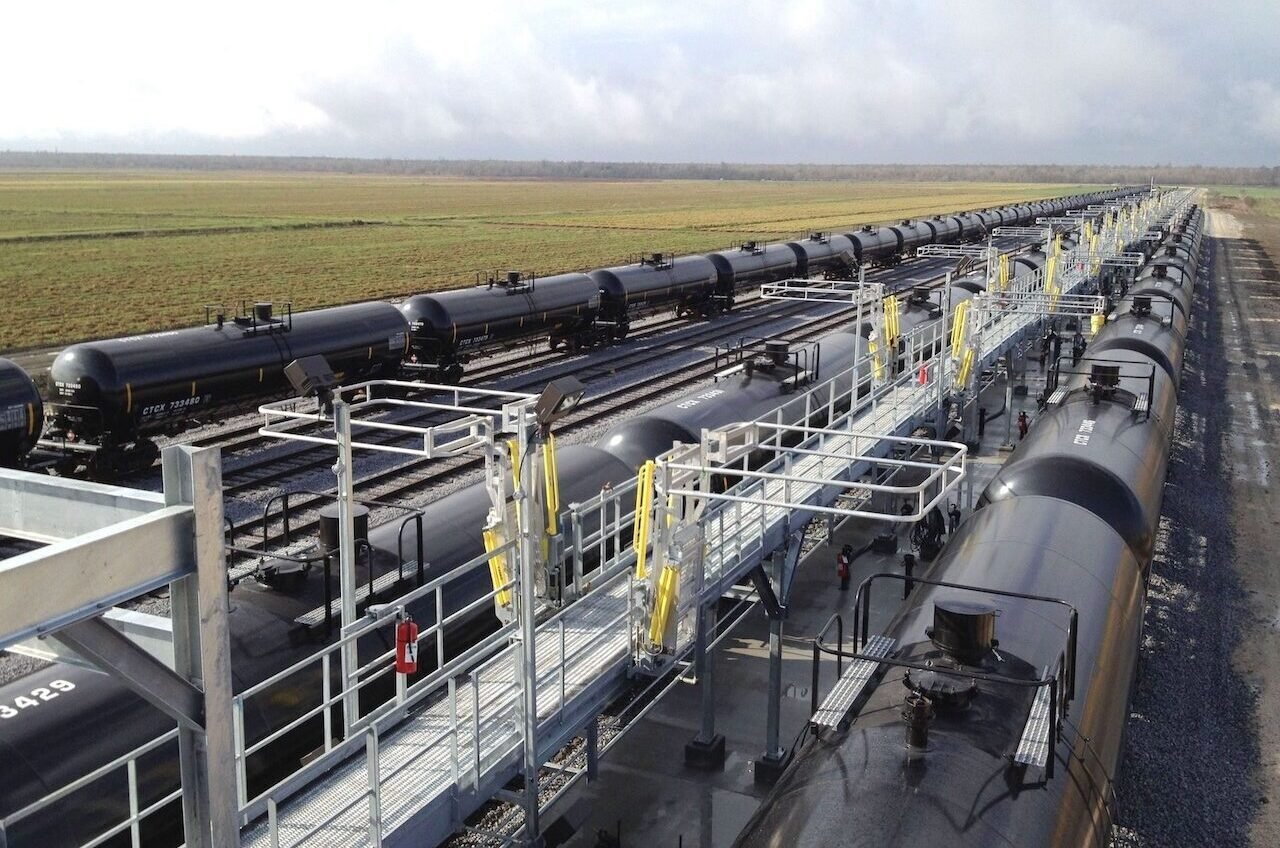
Marine, Rail, and Truck Terminals
Demand for rail and truck transport is growing and so is our expertise.
Supported by our network of specialists, our engineers design rail, truck and API storage terminals that meet client needs, address community issues and respect environmental regulations. We have designed rail facilities that can load up to 76 rail cars at one time and handle up to 450 cars per day.
Rangeland has a long history of designing rail and truck terminals and providing EPCM services that support the loading, unloading and trans-loading of hydrocarbon products such as condensates, propanes, butane, diesel, crude oil, natural gas liquids and asphalts.
Both constructible and cost-effective, our designs include incoming and outgoing interconnections, associated meter manifolds, tankage and containment areas, as well as hydraulic and pumping designs.
-

Prince Rupert Marine Terminal
The Prince Rupert Terminal will receive 3,975 m3/day (25,000 bbl/day) of propane via rail from Alberta and offload into pressurized storage spheres via compressed gas displacement. This equates to approximately 35 railcars offloaded in a 12-hour shift. The railcars arrive and are spotted at the 20-spot dual sided offloading rack. Liquid propane is routed through the rail transfer bullet to eliminate any trapped vapour and pumped to the storage spheres via rail transfer bullet pumps.
Propane is stored in three pressurized spheres with a maximum working capacity of 22,131 m³ (139,191 bbl). Marine-loading pumps load propane from storage spheres to a handysize gas carrier once a week
The Prince Rupert Terminal is a key project to get surplus Alberta produced propane through British Columbia to tidal waters and intercontinental markets.
The facility design includes:
• Pressurized storage spheres
• 20 railcar unloading rack
• Marine ship loading arm
• New bridge over rail mainline
• Marine loading equipment on existing dock
• Fire protection systems
• Control room and MCC
• Pumps, compressors, and bullets -

Edmonton Rail Terminal
Commissioned in May 2015, the Edmonton Rail Terminal is one of the largest crude oil loading facilities in North America. It will accommodate up to three unit trains per day comprised of 150 railcars each. The facility is capable of loading 76 individual railcars at one time, achieving an ultimate capacity of approximately 250,000 barrels per day.
The crude oil loading facility was designed to load two product streams simultaneously into separate unit trains and is capable of handling all liquid products for delivery by rail to North American markets and refineries.
The facility design includes:
• A dual-sided loading platform with 76 individual loading stations capable of filling 450 railcars per day (approximately 250,000 bbl/d)
• Two API storage tanks for oil displaced while changing between product batches
• Two product-transfer pumps for loading railcars from storage tanks
• Custody transfer by Coriolis meter and AccuLoad® flow computer
• Vapour recovery and incineration system to minimize release and operator exposure to odours and hazardous gases
• Utilities/infrastructure to support the facility, including: nitrogen purge, fuel gas, instrumentation and controls, electricity, lighting, emergency and uninterrupted power supplies, potable water, sanitary sewer, fire protection, spill containment, API oil/water separator, site security, pedestrian overpass, roads and vehicle overpass. -

Fort Saskatchewan Plant Expansion
The key focus of the Plains Midstream Fort Saskatchewan project was to expand the NGL storage and fractionation facility to maximize facility, storage and take-away capacity.
As part of the expansion, the new operating philosophy allowed for production of propane, butane and condensate, as well as a de-propanizer fractionation side-draw mixture of propane and butane. It increased the storage capacity of the existing salt storage caverns by adding new brine ponds and associated facilities for brine storage. New storage capacity was in the form of additional underground salt caverns to store produced and imported products.
To increase take-away capacity, Rangeland also designed a new butane and propane truck-loading terminal with two spots.
The facility design included:
• Wash water system & well facilities
• Hydrocarbon API pumps
• API storage bullets
• Calcium chloride dehydrators
• HPS water injection pumps
• Truck loading facilities
• Brine transfer pumps
• Underground intra-site pipeline
• Utilities, control systems, and offsite facilities
